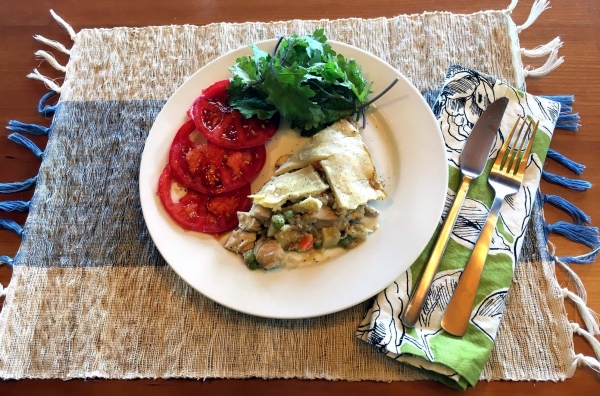BRATTLEBORO — VT Dinners, the locally-sourced prepared-food company, recently changed its distribution model. The company's line of ready-to-heat, vegetarian meals is now available in stores.
VT Dinners, produced in the Winston Prouty School's community kitchen, uses fresh Vermont vegetables and dairy products from Harlow Farm, Old Athens Farm, Thomas Dairy, Grafton Village Cheese Company, and Maple Brook Creamery, processing them into frozen meals.
The name is a rearranging of “TV dinners,” co-founder Nathaniel Brooks said.
Although VT Dinners started with the CSA subscription model, where customers preordered meals and either had them delivered or picked them up at a few Brattleboro locations, the company is now distributing the meals directly to stores and plans to phase out the subscription format.
Beginning in early September, the Vermont Country Deli, Dutton's Farm Stand in Manchester, the Brattleboro Food Co-op, and Montpelier's Hunger Mountain Food Co-op began selling VT Dinners' meals from their frozen sections.
According to co-owner Natalie Pelham, Walker Farm and Dutton's Newfane location may soon carry the line, too, depending on freezer availability.
Pelham pointed out the commitment VT Dinners has for “as minimal a carbon footprint” as possible, and that that won't change with the new distribution model.
The food is packaged in composite paperboard trays, rated for 400-degree ovens and microwave ovens. All the packaging is fully biodegradable, she said, and even the cling-film covering the meals can be composted in a city system, such as Brattleboro's curbside compost program - but Pelham said backyard compost piles don't get hot enough to break down the thin sheet of film.
One major change to VT Dinners is the absence of meat.
Whereas some of the meals formerly contained meat, now they are all vegetable-based, Pelham said. “Licensing for meat production is difficult” and more complicated than meat-free foods, Pelham said. “We may add meat back into the meals later,” she said, “but the goal now is getting them into stores."
“We're developing recipes for different diets,” Pelham said, such as gluten-free, grain-free, and dairy-free. “The easiest one to do on a small scale,” she said, “is vegetarian."
Currently, VT Dinners is finishing up the four summer-season meals and is transitioning into the four fall-season meals, “but we may keep the grain-free lasagne because it's so popular,” Pelham said.
“We overlap our meal menus to take advantage of the harvest season,” Pelham said. “Our whole model is based on scheduling our production around the abundance of what local farms have."
The meals shrank in size, too. The former “subscription” size was 20 ounces, meant to feed at least two people, “but customer feedback told us people wanted a small format for more versatility and a competitive price,” Pelham said.
Being small and local gives VT Dinners more flexibility and agility than some larger food manufacturers.
“We can adjust our meals to what people want and what's available, rather than trucking ingredients across the country, all while keeping our costs in line,” Pelham said.
